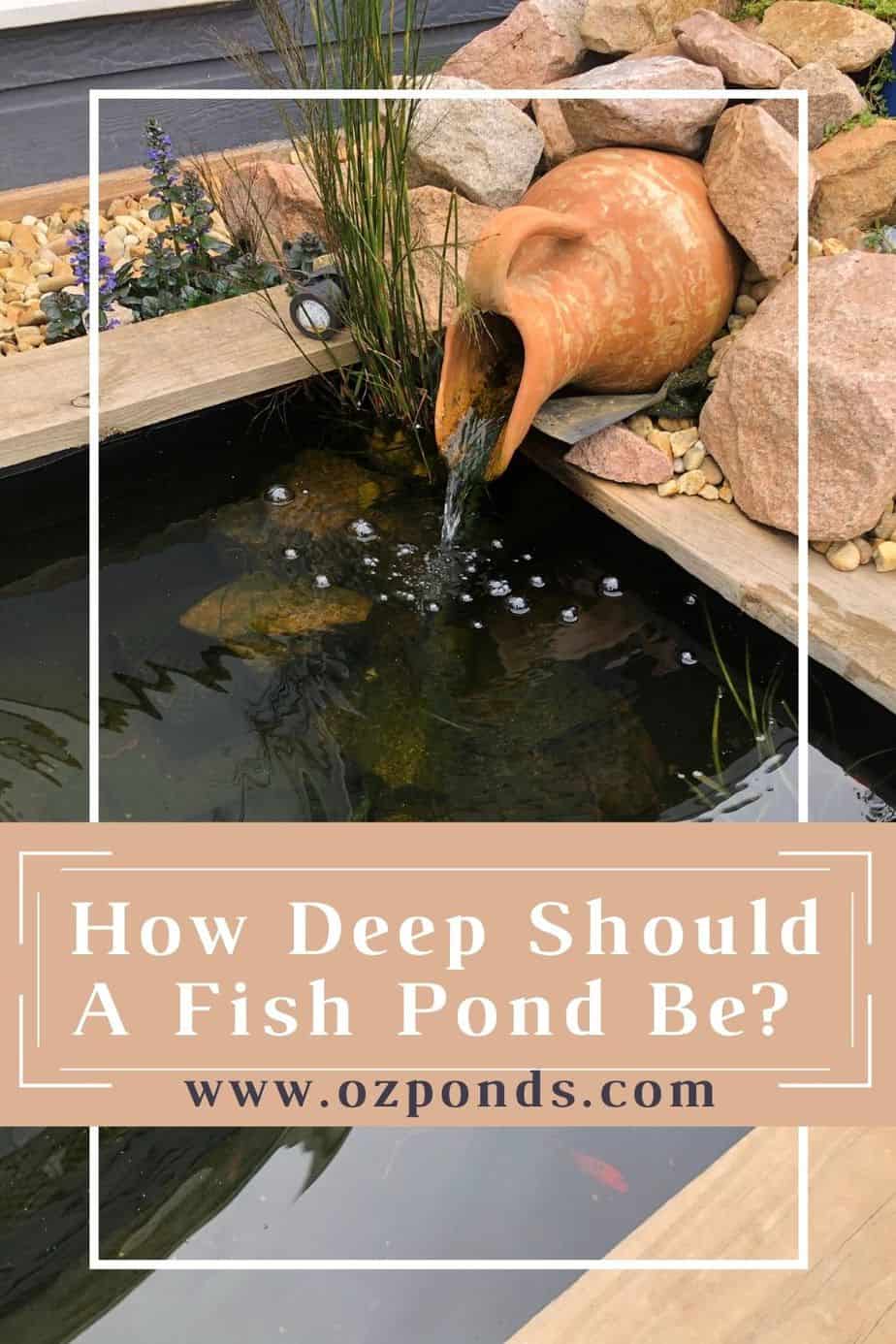A fish pond that will house goldfish or smaller fish doesn’t need to be as deep as a koi pond. Goldfish and smaller fish are much easier to care for than koi and their needs are easily met.
You can keep fish in a shallow pond of only 1’(300mm), but ideally a pond 2’(600mm)- 3’(900mm) will provide a more optimal environment.
Climate plays a major factor in how deep a pond should be. Will the pond freeze? In summer will the water get too hot?
Other factors include how much more maintenance a shallower pond can be. Do you want water plants? Is the water being circulated? Will you require a fence? All of these are valid questions to be asking… So let’s see if I can help give you some answers.
Climate and pond depth
If your considering a fish pond that is on the shallow side (1’ deep) you’ll need to live in a temperate or tropical climate. A 1’(300mm) fish pond is simply just too shallow in areas where the pond freezes.
In ponds where the surface freezes the fish need to be able to swim down deep enough to escape the ice water. If you’re in a zone where the surfaces of ponds freeze, create your pond with a deep zone 1’6”-3’(450mm-900mm). You can go deeper if you wish but this should be sufficient for the majority of ponds.
For those of us in temperate and tropical zones, we can easily get away with a shallow 1’(300mm) pond. In these climates, the focus is more on what is happening during the summer months.
Shallow water will heat and cool quickly. Rapid temperature fluctuations will stress fish! And stress is the number one killer of fish. It allows their immune system to falter, which makes them vulnerable to diseases and parasites.
So if you are considering a shallow fish pond carefully consider its position and overall size.
Ideally you want to keep a small shallow pond out of direct sunlight for most of the day. The shaded side of the house, under trees or an outdoor entertainment area are good choices.
If the shallow fish pond is going to be in full sun for most of the day the best way to avoid rapid temperature fluctuations is increasing the overall volume of water. The more gallons or litres your pond can hold the more resilient it is to temperature fluctuations.
Water has exceptional thermal properties it heats and cools slower than the surrounding earth. Think of a kettle it takes longer to boil a full kettle. Heating the pond is the same. The larger the body of water the longer it will take to heat.
Maintenance- deep vs shallow fish pond
While a shallow pond is obviously much quicker to construct you may find that it requires more time spent cleaning than a deeper pond.
The first reason is algae.
As I mentioned above a shallow pond will heat and cool faster. Algae likes a bit of warmth. If your pond has too much nutrients (fish waste, leaves ect) and warm water algae is pretty much guaranteed.
The best natural method of combating algae is providing a good amount nitrifying bacteria (see my article on the nitrogen cycle in a pond) and plants. I like to use a bog or wetland filter (see my article).
Sometimes it may not be possible to add a wetland or bog. You’ll still need a filter if you want a good amount of fish. Popular options are adding an external filter unit, these will require periodic back flushing.
Another good option is a waterfall filtration unit. Again will require a clean from time to time but less often than an external filter will.
I do have an article on algae control if your interested in learning all the methods available to fish pond keeper.
The other reason a shallower pond can also be more work is just the accumulation of debris in the bottom of the pond. In a shallow fish pond this can be more visible.
A deeper pond should have shelves incorporated into its design. This allows the debris to accumulate at the deepest part of the pond. Here it’s less visible and can more easily be removed using a dirty water pump or pond vacuum.
If left alone the beneficial nitrifying bacteria and micro organisms will help to break down this debris but it does take time.
Adding a pond skimmer can greatly reduce the amount of debris buildup. Products like muck buster contain enzymes that eat this debris buildup.
My first pond i built is only 30cm (1ft) deep. Whilst i love it, it does get algae problems from time to time and is a bit more effort to maintain.
My deeper 60cm (2ft) ponds are much more hands off maintenance.
If i was going to go shallow again i would make sure it’s in the shade. And definitely add a skimmer or intake bay to collect leaves before they sink.
Plants
Adding plants to your fish pond has so many benefits. Makes the pond look more natural, can provide shade and strips nutrients from the water.
Different plants will require different depths. So you should always provide varying depths within the pond.
This will allow for a greater diversity of plantings. By creating diversity the pond ecosystem becomes more robust.
The most popular water plant for a fish pond is, of course the water lily. A water lily can grow in 1’(300mm) of water but an ideal depth is 1’6”(450mm)- 2”(600mm). There are 2 main types of water lilies: hardy and tropical.
Tropical water lilies need warm water year round, and are evergreen. Hardy water lilies can be grown in areas with cold winters as the lily dies down during winter.
Water lilies will provide shade to the water, this helps it stay cool in summer and can minimise algae growth. Adding marginal plants is another way to help minimise algae and create a more natural looking pond ecosystem.
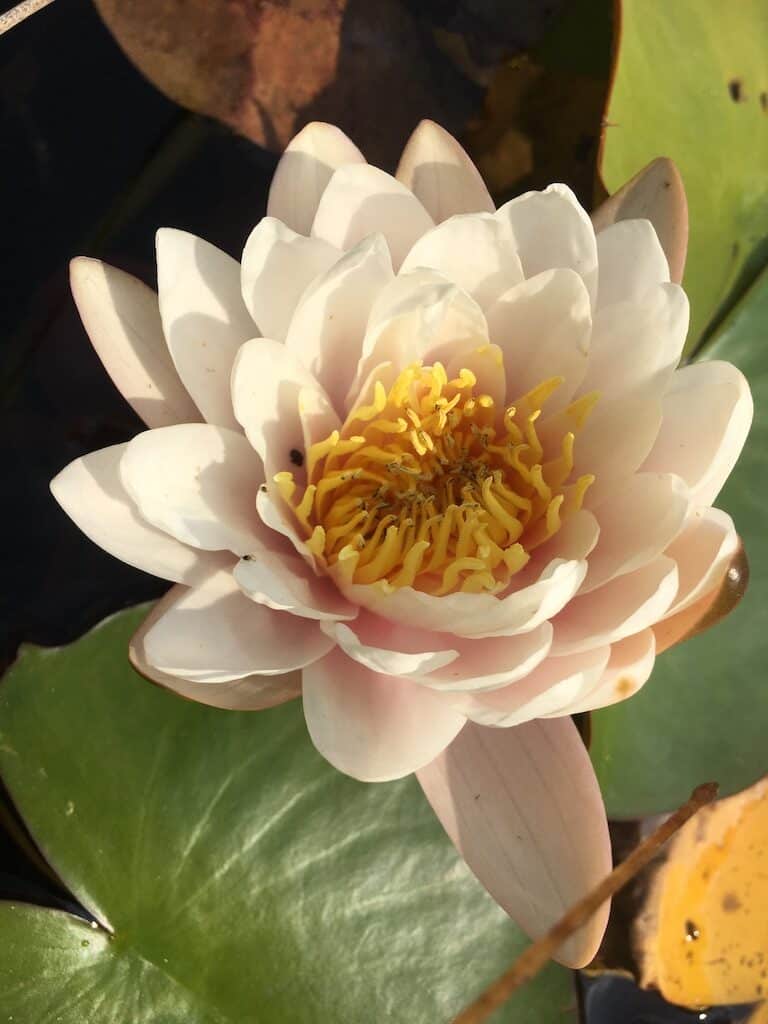
Water lily 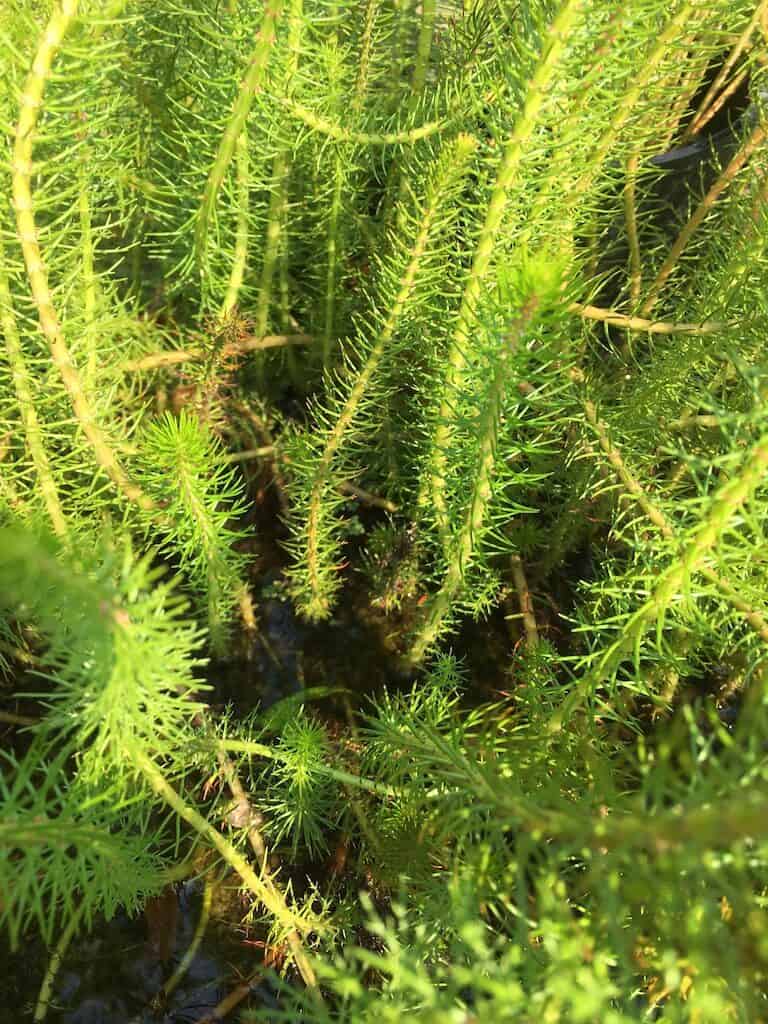
Upright water milfoil 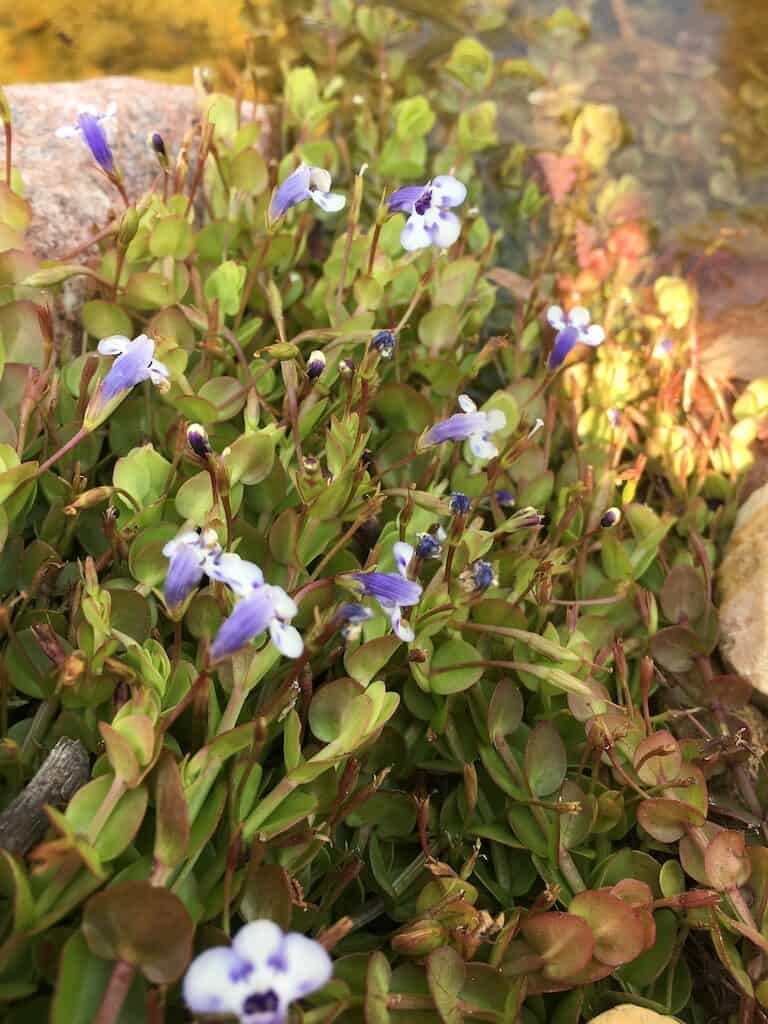
Blue moneywort 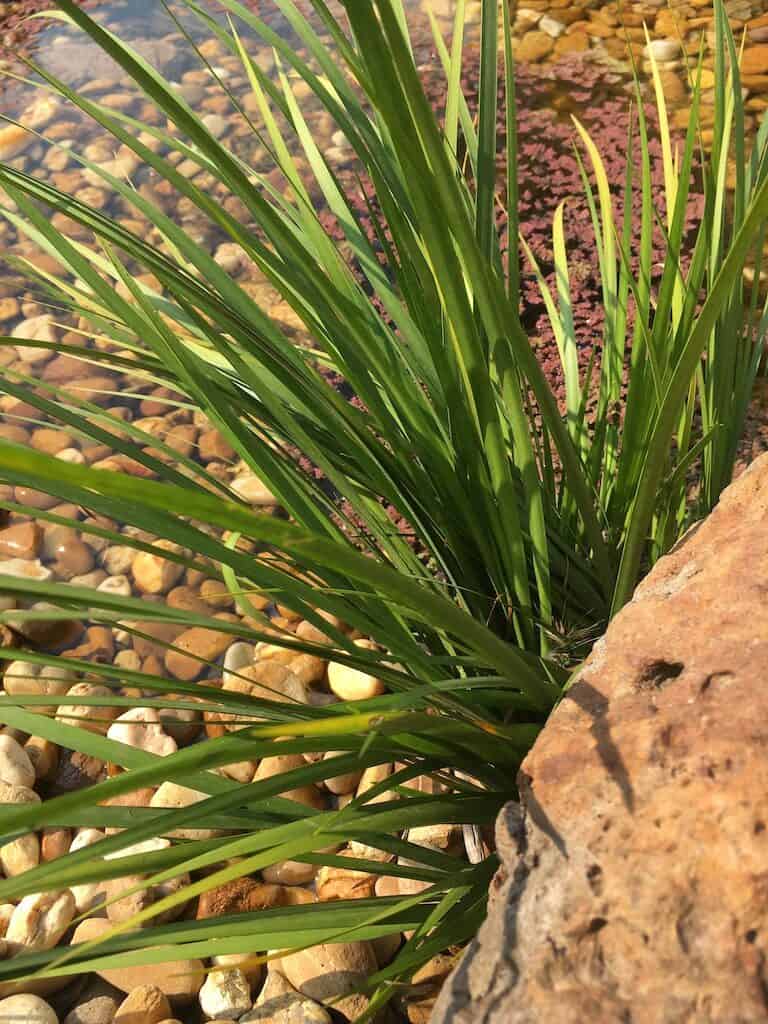
Japanese sweet flag 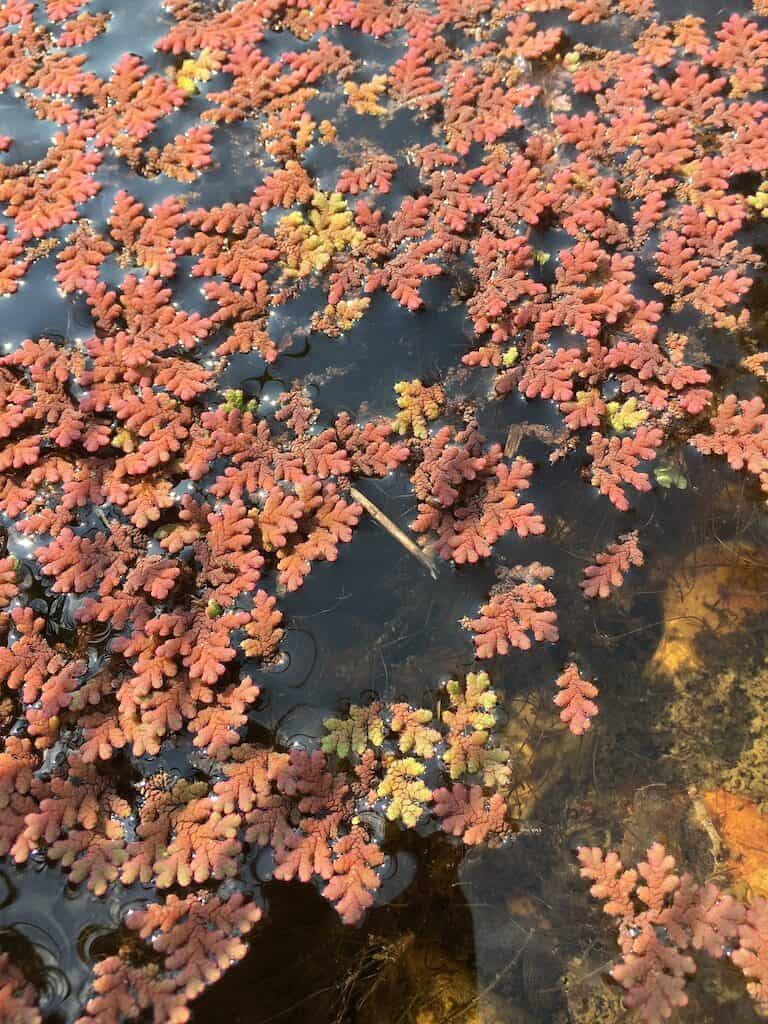
Azolla pinnata 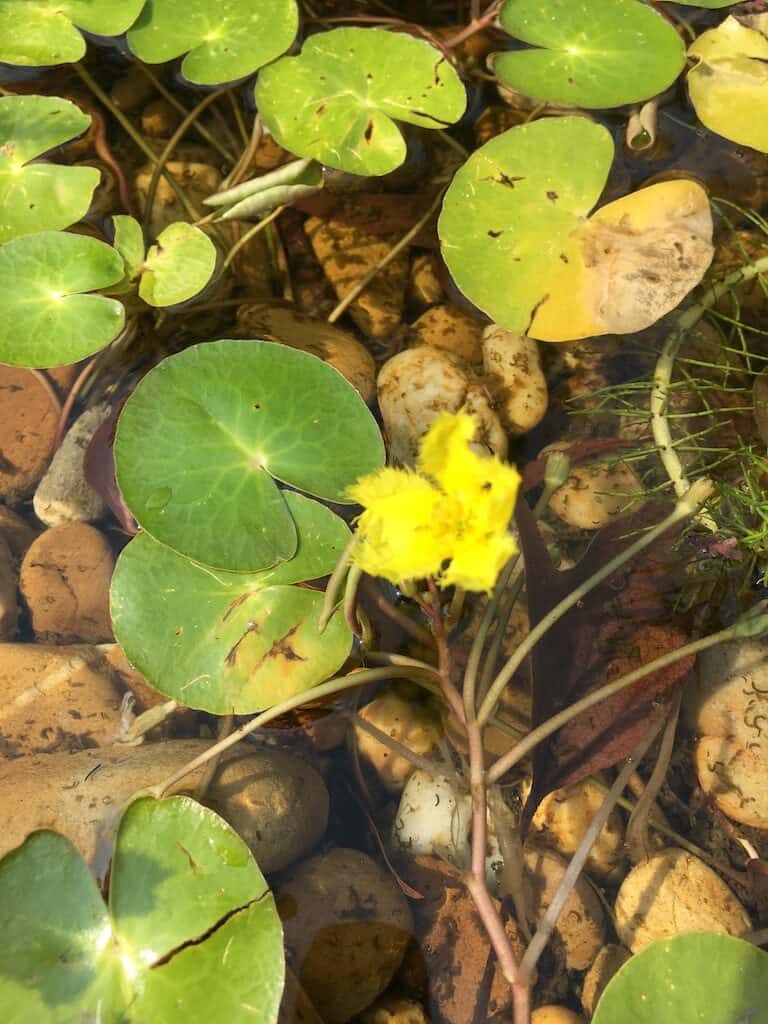
Water fringe
Marginal plants can be grown in shallow water 6” (150mm)- 1’(300mm).
Remember creating different depths during your building phase will allow for a more diverse range of plants.
Marginal plants will send their roots down into the water. The roots will consume excess nitrates produced by the nitrogen cycle.
If you want to get some planting ideas check out my article on 40 awesome pond plants.
So while overall depth is an important consideration, so to is providing varying depths in the pond.
Circulating the water
Ideally the water should be circulated in any pond regardless of depth. I do feel it’s more important though on a shallow pond. In a shallow pond there is generally less plant diversity due to the lack of varying depth.
Also in a shallow pond most pond owners won’t allow a layer of sludge and muck to form on the bottom as it looks unsightly. However this sludge and muck is home to multitudes of beneficial bacteria’s and organisms that are working wonders to maintain water quality.
A deeper pond can incorporate many varying shelf depths which allows us to encourage more plant biodiversity, which will help maintain a well balanced ecosystem. We can also allow sludge and muck to build up in deeper zones of the pond without it becoming too unsightly to the overall pond appearance.
Placing a water lily in these deep pockets can also help mask the build up of debris. You can read more detail about a pond with no pump by clicking the link to our article.
Do I need a fence?
Here in Australia we have very strict guidelines for fences around swimming pools. A quick check of some of the popular forums and you can see people are very concerned about pond fencing also.
I have an article talking about ponds and fencing.
With swimming pools a fence is required of the pool is over 1’(300mm) deep. This lead many people to assume their ponds would also require a fence.
Lots of people build their ponds at only 1”(300mm) so they don’t require a fence.
However the rules don’t apply to ponds (in most states and territories) and all these people made their ponds unnecessarily shallow (including me, originally).
A quick email to your local council will let you know exactly what is required and provides you with a written answer.
Don’t just take what the internet says as gospel, and yes that includes this site also.
Well hopefully this has helped you decide on an appropriate depth for your fish pond.
For me the ideal depth of a fish pond is a minimum of 2”(600mm), remember it doesn’t need to be that deep throughout. But it should certainly have areas that go down to at least that depth.
Subscribe
For those of you who haven’t already subscribed click the button below and fill in the form. I often receive offers and discounts on pond related products. I love saving my readers money!

